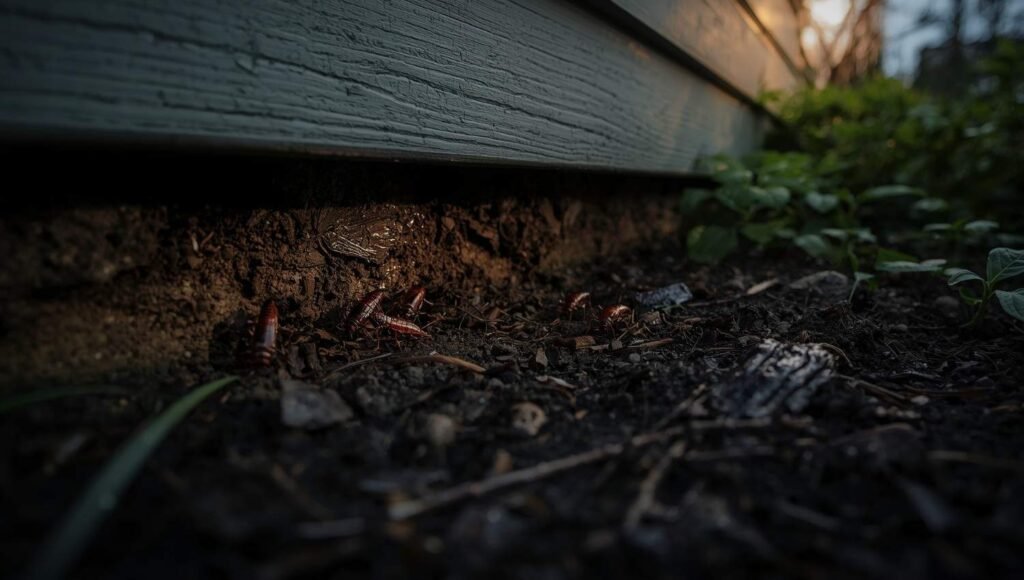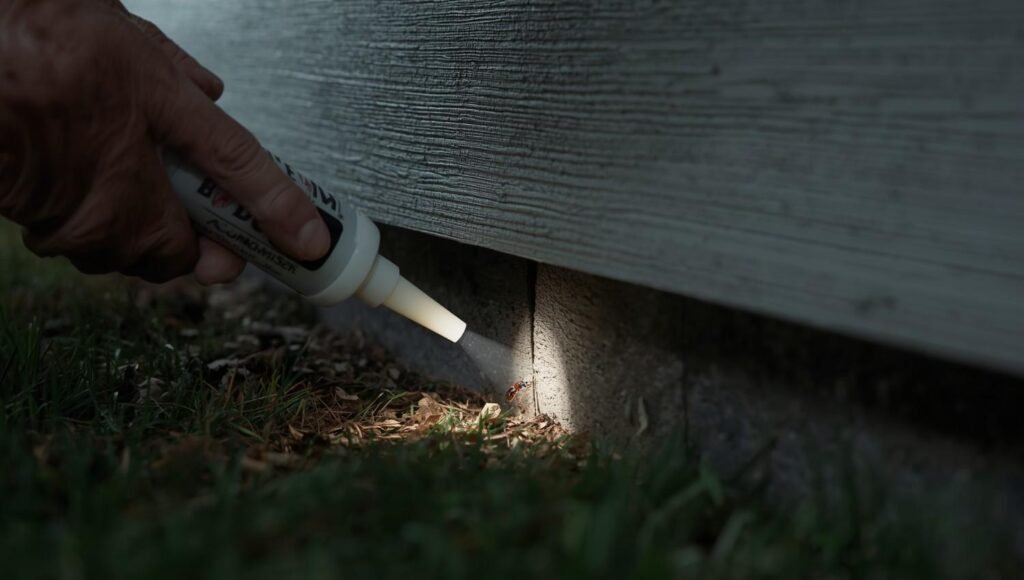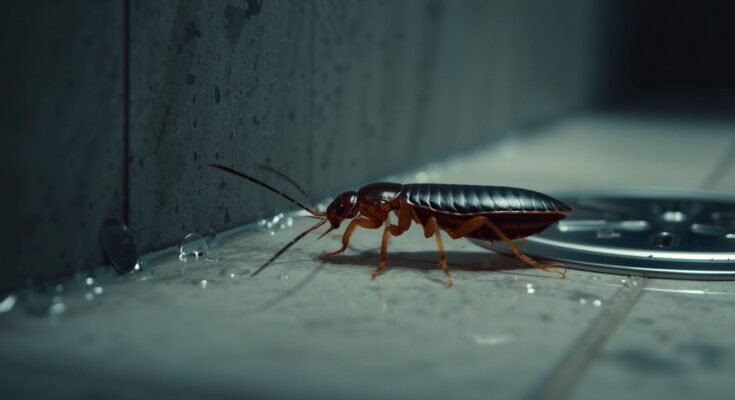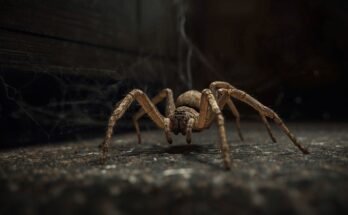Introduction
I’ve dealt with earwigs more times than I can count while helping clients through Dodson Pest Control, and I get why people panic — these creepy crawlies look intimidating with their long bodies and sharp pincers. There’s even that old wives’ tale that they crawl into people’s ears while they sleep, which is simply not true; they don’t randomly crawl into your ear at night. Still, seeing them in large numbers inside what should be a hospitable space for real guests (not the insect kind) is undeniably unpleasant. I’ve found them most often in the bathroom, basement, or kitchen, where ideal conditions like dampness and opportunities for food exist — making it necessary to evict such unwanted houseguests before they lead to other problems, even if they cause little damage at first.
Over the years, I’ve learned to get rid of these creepy crawlers quickly by eliminating what attracts them indoors and in the garden, rather than waiting for them to spread. When I discuss solutions with homeowners, it’s always about taking action before pests multiply, focusing on how to prevent return rather than just reacting to an outbreak. This approach gives you everything you need to know to stay ahead — not just temporarily push them out, but make your home genuinely unwelcoming to them for good.
What Are Earwigs?
People often mistake earwigs for dangerous insects because of their intimidating appearance, but they are simply nocturnal pincher bugs with six legs, antennae, and a leathery exoskeleton. Their bodies are usually brown or black, about an inch long, and their curved pincers at the end of their abdomens are mainly used for defense and catching prey— not to harm humans. They do have wings tucked under wing covers, but they aren’t strong flyers and are more often seen scurrying around on the ground, especially in damp outdoor spots.
They are most often recognized by those scary pincers, which look far worse than they actually do. You’re likely to see them hiding under rocks, mulch, or debris at night; however, they rarely bother humans unless disturbed. Despite their look, they play a role in natural cleanup by eating dead material and small insects — making them more misunderstood than dangerous.

Do Earwigs Bite?
The good news is that earwigs do not bite and are not dangerous to humans, even though their menacing appearance often makes people worry. In reality, these household pests are actually quite timid and will run away rather than approach you. They don’t attack, and it’s highly unlikely for them to hurt you unless you pick one up — and even then, they’d try to pinch using their pincers, not to harm, but out of simple reflex.
Even if pinched, their pincers almost never break human skin, and they’re not poisonous, do not spread disease, and are not dangerous in any medical sense. So while you don’t need to fear them, it’s understandable why most people still find them unsettling at first glance.
Why Earwigs Infest Homes?
Earwigs often infest homes when the weather starts cooling down in the fall, as they enter in search of warmth, food, and water. A warm home with moisture, damp areas, or high humidity — such as sinks, showers, basements, and crawl spaces — creates warm, humid environments that feel safe and offer protection from outdoor elements. These pests are omnivores, feeding on plants, aphids, insects, crumbs, pet food, and even the occasional houseplant, which makes ordinary living spaces like bedrooms and dining rooms perfect for hanging out if access is available.
Since it’s colder outside, they hide in dark, secluded spots like under sinks, behind clutter, or near water leaks, and are often attracted to light sources such as porch lights, unintentionally leading you to inadvertently invite them indoors. They don’t come to attack — they come to shelter, survive, and settle wherever conditions quietly favor them.
How to Identify Earwigs?
If you can identify earwigs, you’ll notice these little buggers by their distinct feature — the small pincers on their hind end, which is unlike any common household bug. They’re usually one-half to three-quarters inch long, brown with light brown legs, and have an elongated body with curved cerci pinchers, which is why people also call them pincher bugs. Their young nymphs look like miniature versions of the adults, just lighter in color but with the same overall shape.
They use those pincers to capture prey and defend themselves when threatened, and while they might pinch and hold on if touched, they rarely break the skin or cause bleeding. In some cases, they may emit a foul odor by releasing liquid from their abdomen — a natural reaction I’ve heard both certified entomologist Ray Hess and Jim McHale from pest management mention during inspections.

How to Identify Earwig Damage?
Most people try to identify earwig damage indoors, but earwigs rarely cause damage to your home — they’re usually a result of it, slipping in through damp areas around the foundation or gaps they can slip through, as pest control expertNicole Carpenter explains. You might not even see them touch anything indoors, but you can often spot them in damp, shady spots like under mulch, trash bins, flowerpots, or in bathrooms and basements, where conditions stay moist.
If they do cause issues, it’s usually from nibbling on houseplants or even paper, leaving minimal damage like tiny chew marks, ragged edges, or holes in leaves and petals — but not enough to kill healthy plant life. In the garden, their feeding looks similar to snail or slug damage, but without slime trails, as Hess often describes when identifying damage on leaves during inspections.
How to Prevent Earwigs from Getting Inside?
The best way to prevent earwigs from getting inside is to remove what attracts them in the first place — they love moist, humid environments with an abundance of food, such as yard debris, mulch, and gardens where moisture allows them to thrive. Outdoors, birds, frogs, toads, and lizards act as natural predators, but inside your home, you must eliminate entry points and avoid standing water near the foundation. A big mistake is ignoring the conditions that drew them inside. If they lose entry points, you solve the problem early, even without chemicals.
You can replace old floors — especially wooden floors with gaps, cracks, or damp subfloor spaces that create cool, moist hiding spots — upgrading to concrete floors deprives shelter completely. Also, add proper drainage to reduce moisture, which is one of the biggest things attracting them. Seal entry points like gaps under doors, loose weatherstripping, cracks in baseboards, or around pipes and cables using caulk, sealant, or new weatherstripping. Finally, eliminate attractions — fix leaks, run dehumidifier, improve drainage, and pull back mulch, wet leaves, or stacked wood from the house. These practical steps, recommended by Carpenter and Hess, clear out current pests and block new ones from entering in the first place.

How to Get Rid of Earwigs Indoors and Out?
To eliminate earwigs quickly, start with the ones visible inside the home — I often just vacuum them or drop them into soapy water, which works instantly. You don’t need to worry about eggs, since earwigs lay outdoors in damp soil, mulch, or debris, not inside your house. Once the obvious ones are gone, the goal is to get rid of the hidden insects that stay tucked away in cracks, drains, and dark corners.
Whether you’re dealing with them indoors or out, there are several methods recommended by both Carpenter and Hess, including natural pest control approaches that avoid harsh chemicals. These solutions don’t just remove existing bugs — they stop more from entering afterward.
Diatomaceous Earth
One natural pest control approach I often use is diatomaceous earth, an effective measure against pests like earwigs. It works by placing ring formations around the base of affected plants, drying the bugs out when they cross it. However, don’t use it in wet areas, because moisture makes it clump, which turns it ineffective. It can also be applied indoors, but make sure to thoroughly vacuum afterwards once it has done its job — especially if you have kids or pets around the garden.
Oil Trap
An oil pit trap is another method I’ve seen Hess recommend for stubborn infestations. You mix soy sauce with olive oil or vegetable oil in a plastic container with a lid, then punch holes just big enough for bugs to get through under the lid before you bury the container partly into the soil. The soy sauce attracts earwigs while the oils prevent escaping once they’re caught, and you can simply change it whenever needed to keep it active.
Garden Trap
For outdoor setups, I like using natural garden traps made from bamboo or garden hose cut into one-foot sections and placed in garden beds. Earwigs nest inside overnight, so you can check every morning and dump out whatever you find into a bucket of soapy water. It’s an easy way to create control without chemicals, and Hess often recommends it for early detection.
Earwigs and Chemical Intervention
If needed, chemical intervention is an option — though I always start with chemical-free methods since they’re simple, effective, and non-toxic, even if population drops take longer. Using chemicals is fast and often more effective, but can be toxic to people and pets if not used correctly. Most chemical earwig control products start outside, where insects come from — applying residual insecticide like bifenthrin or lambda-cyhalothrin in a three- to five-foot band around the foundation, especially in damp shaded spots near mulch beds or woodpiles.
Then you treat entry points — door thresholds, window frames, vents, and gaps around pipes or cables. Indoors, I’ve used spray deltamethrin or permethrin along baseboards, behind appliances, and in cracks where bugs hide, plus boric acid dust for hidden areas that sprays can’t reach. There are also chemical pesticide products and essential oils available — but always read and follow labels for best results and safety, just as Hess and Carpenter both stress.
How To Get Rid Of Earwigs?

To get rid of earwigs, the first step is understanding that they are not particularly dangerous, but you still don’t want them taking up residence in your home. The real goal is to control the earwig population and prevent their return by eliminating what attracts them. Start by reducing moisture in warm, humid environments like damp areas in the basement or bathroom — fix leaky pipes, dripping faucets, or use a dehumidifier if needed. Then seal entry points to prevent infestation, especially around teensy cracks, crevices, your home’s foundation, exterior, vents, chimneys, and openings sealed with caulk or even a fine mesh screen.
Next, remove hiding places — clear covered areas, debris, fallen leaves, excess mulch, and overgrown vegetation, and store firewood away from the house. Garden plants and flower beds can attract earwigs, so repositioning them can help. Outdoors, reduce outdoor lighting — swap white light for yellow-toned bug lights, and simply turning off lights near doors can prevent entering the house. If DIY removal methods fail, call a professional pest control company like Dodson Pest Control, which can assess the situation, deliver effective removal solutions, and use experience to eradicate pests and stop future infestations completely.
Conclusion
Even though earwigs are not particularly dangerous, I’ve seen many homeowners panic when these creepy crawlerssuddenly appear in warm humid environments like the basement or bathroom. The key is not just to get rid of earwigs, but to block what attracts them — reduce moisture, seal teensy cracks in the foundation, and remove excess mulch, fallen leaves, or overgrown vegetation that gives them shelter outdoors. When I inspect homes through Dodson Pest Control, I always prioritize long-term prevention over quick reaction — because once you prevent infestation by removing entry points and hiding places, you don’t just fix the current problem — you prevent returning before it even starts.
Frequently Asked Questions (FAQs)
Q1. Why do earwigs suddenly show up in large numbers inside my home?
Earwigs usually move indoors when the weather starts cooling down, especially during fall, in search of warmth, moisture, and food. If your home has damp areas, leaky pipes, or yard debris close to the foundation, it becomes the ideal invitation for them. They aren’t trying to invade — they’re simply following survival instincts from nature. Eliminating moisture and blocking entry points is the fastest way to stop this behavior.
Q2. Are earwigs harmful or dangerous to humans or pets?
No — earwigs are not particularly dangerous, and they do not spread disease or inject any venom. They may pinchwith their pincers if handled roughly, but they almost never break the skin, and they are absolutely not poisonous to people or pets. Their scary look causes more fear than their actual impact. They are more of a nuisance than a threat.
Q3. What is the fastest chemical-free way to get rid of earwigs?
A reliable method is vacuuming any visible inside home earwigs immediately and using natural pest control options like diatomaceous earth around garden plants or oil pit traps outside entrance zones. Pair this with reducing moisture using a dehumidifier and clearing yard debris that touches the foundation. These steps force them out naturally without introducing toxins indoors. When done correctly, this approach starts reducing activity within days.
Q4. When should I call a professional pest control company instead of handling it myself?
If earwigs keep returning despite sealing entry points, fixing leaky pipes, and cleaning covered areas, it means there’s likely a deeper moisture or structural issue. At that point, a professional pest control company like Dodson Pest Control can assess situation, track hidden crevices, and use targeted effective removal solutions that go beyond surface-level DIY attempts. Experts not only eradicate pests but also help secure a strategy that prevents future infestations permanently.




